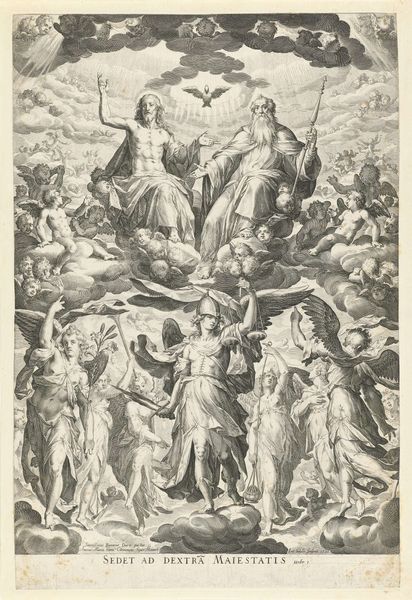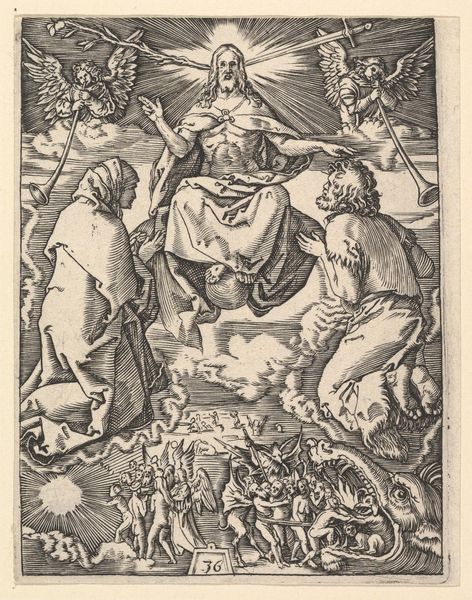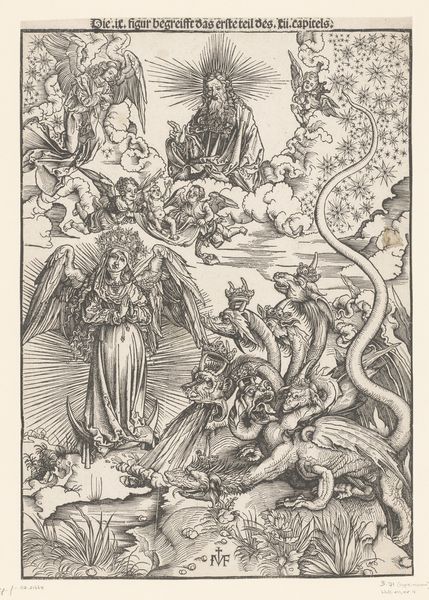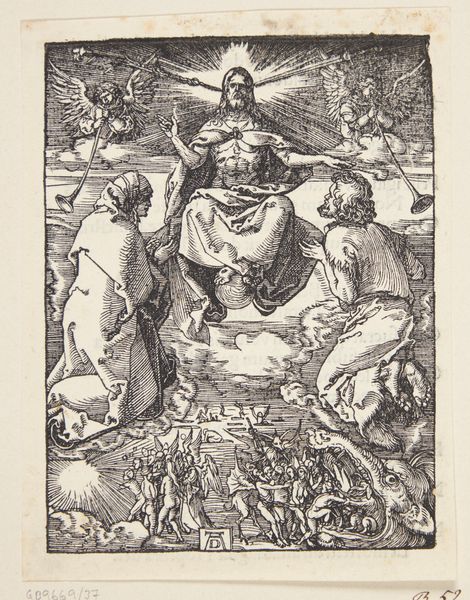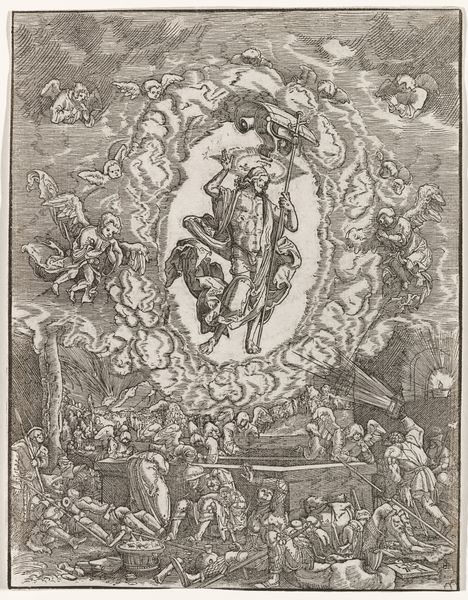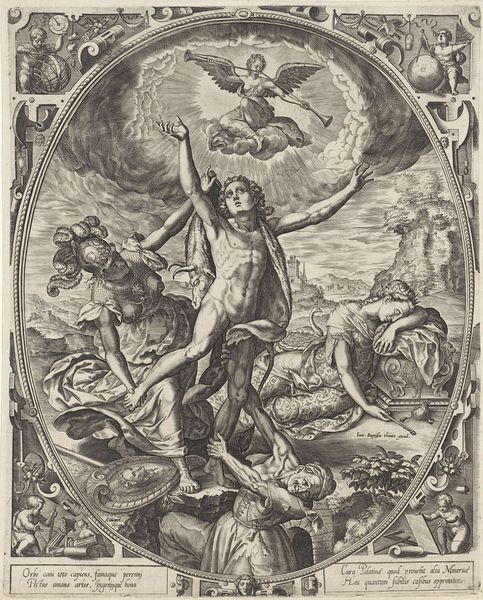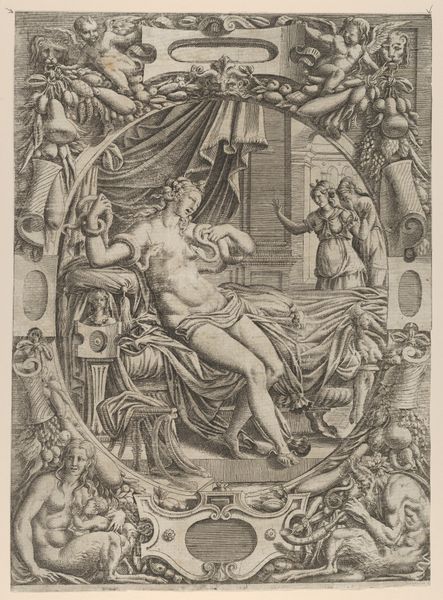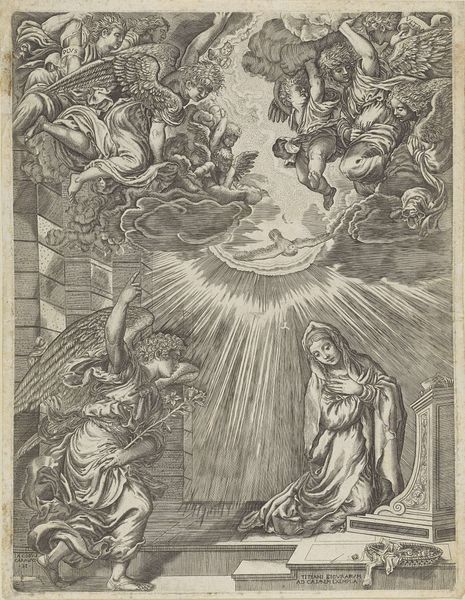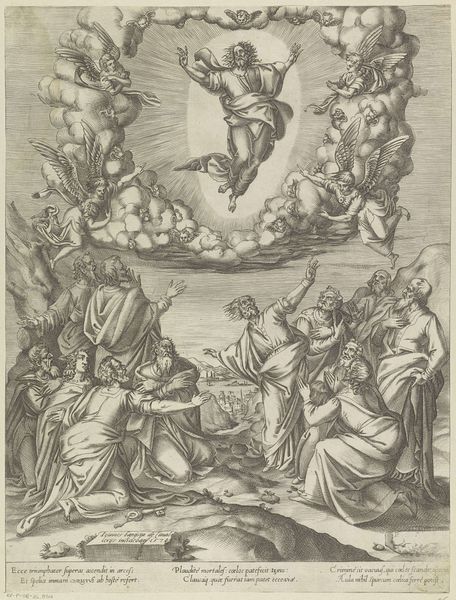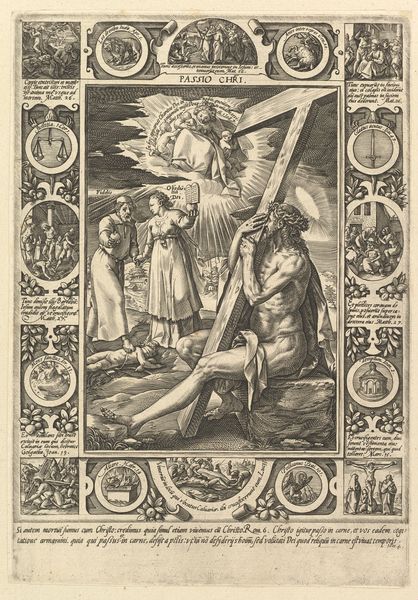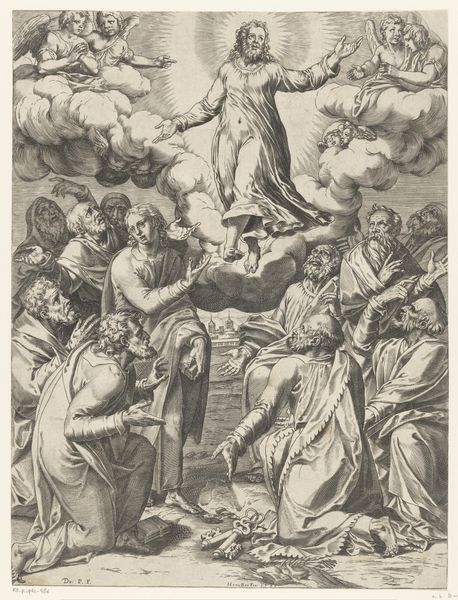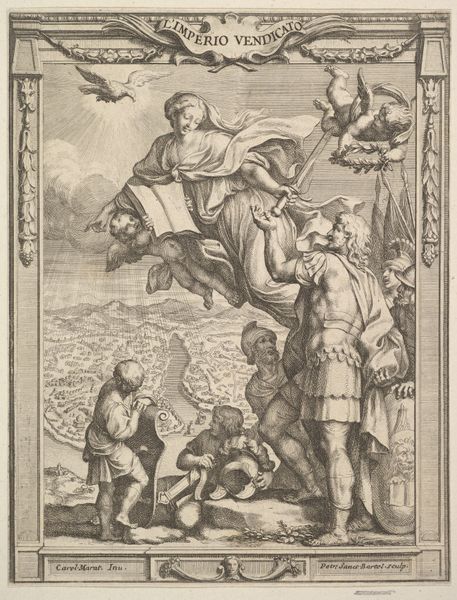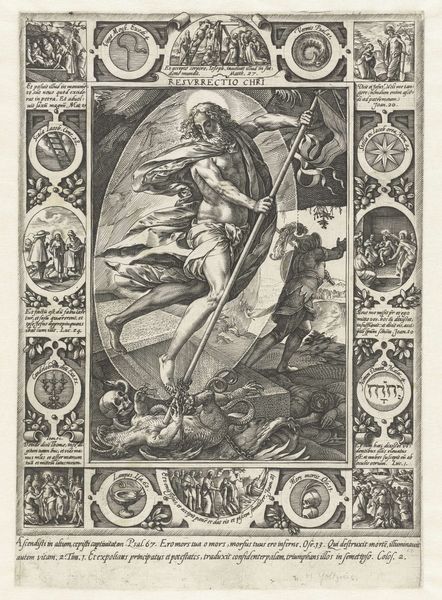
The Martyrdom of Saint Cristina di Bolsena with God the Father above 1570 - 1615
0:00
0:00
drawing, print, intaglio, engraving
#
drawing
#
allegory
# print
#
intaglio
#
mannerism
#
figuration
#
history-painting
#
italian-renaissance
#
nude
#
engraving
Dimensions: Sheet: 17 in. × 11 11/16 in. (43.2 × 29.7 cm)
Copyright: Public Domain
Editor: I’m drawn to the stark contrast of light and shadow. There's a raw vulnerability, a naked truth etched in every line that feels both exposed and empowered. What's the story behind this piece? Curator: This is "The Martyrdom of Saint Cristina di Bolsena with God the Father above," an engraving created between 1570 and 1615. It is currently held at the Metropolitan Museum of Art, here in New York. The work is attributed to Cherubino Alberti. Editor: Martyrdom! Now that explains the intensity. She seems afloat in torment. What's the symbolism behind this depiction? Is that a dolphin she’s riding? Curator: Indeed! It's not always easy viewing, is it? Saint Cristina's narrative is riddled with tortures, each escalating beyond belief. Alberti pictures a tale where Cristina is cast into Lake Bolsena with a stone tied to her. Divine intervention, depicted above with God the Father and frolicking angels, saves her by setting her afloat on that… very conveniently placed dolphin. It’s said her tormentors then peeled off her skin with iron combs before eventually cutting out her tongue. It really makes you question humankind sometimes. Editor: Peeling skin, cut out tongue… that’s a whole other level of brutality, and all committed in the name of faith. Is this the visual culture that spurred counter reformation efforts or vice versa? Does this print propagate those messages or perhaps critizise that violence? It also includes some noble insignia… Why is it linked with Ferdinand de Medici and Christiane of Lorraine? Curator: Right, engravings like this absolutely circulated and solidified religious and political positions during that era. Cristina’s martyrdom was an enduring subject and represented one possible stance that one could hold during the religious schisms of the time. The noble insignia suggest that the image may have served as propaganda, glorifying the Medici family. Or it may commemorate Christiane's own fortitude as a prominent female figure within that dynasty. Editor: It's fascinating how a single image can encapsulate such a complex tapestry of faith, violence, and political maneuvering. It definitely prompts reflection. Curator: Agreed, this engraving speaks volumes, though a lot of what it communicates is unspoken, it’s sensed, it’s there lurking beneath the lines. Editor: Makes you shudder really... Thank you for that fascinating interpretation. Curator: You’re very welcome, glad I could offer some illumination.
Comments
No comments
Be the first to comment and join the conversation on the ultimate creative platform.
